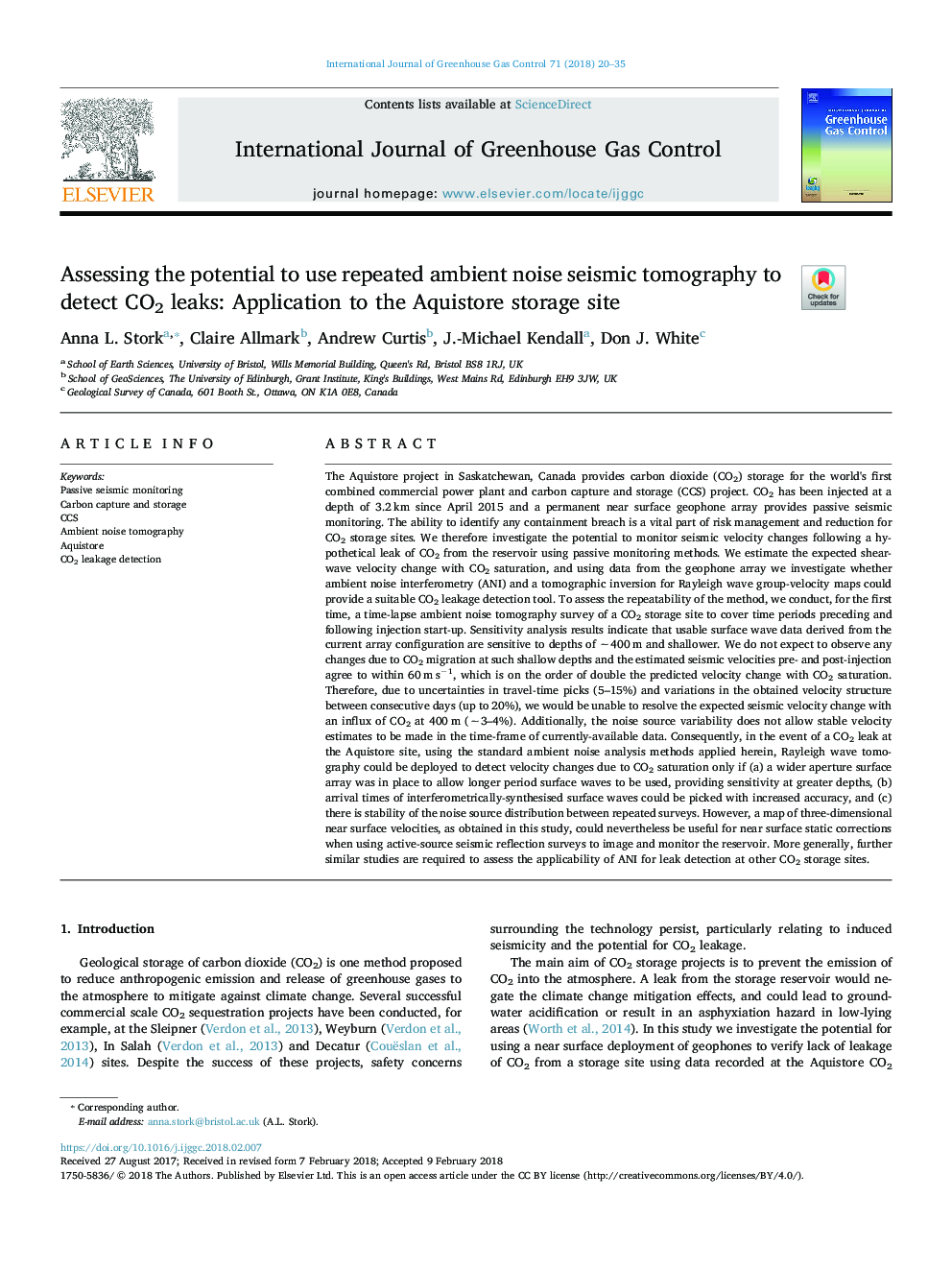| کد مقاله | کد نشریه | سال انتشار | مقاله انگلیسی | نسخه تمام متن |
|---|---|---|---|---|
| 8089519 | 1521948 | 2018 | 16 صفحه PDF | دانلود رایگان |
عنوان انگلیسی مقاله ISI
Assessing the potential to use repeated ambient noise seismic tomography to detect CO2 leaks: Application to the Aquistore storage site
دانلود مقاله + سفارش ترجمه
دانلود مقاله ISI انگلیسی
رایگان برای ایرانیان
کلمات کلیدی
موضوعات مرتبط
مهندسی و علوم پایه
علوم زمین و سیارات
فرآیندهای سطح زمین
پیش نمایش صفحه اول مقاله

چکیده انگلیسی
The Aquistore project in Saskatchewan, Canada provides carbon dioxide (CO2) storage for the world's first combined commercial power plant and carbon capture and storage (CCS) project. CO2 has been injected at a depth of 3.2â¯km since April 2015 and a permanent near surface geophone array provides passive seismic monitoring. The ability to identify any containment breach is a vital part of risk management and reduction for CO2 storage sites. We therefore investigate the potential to monitor seismic velocity changes following a hypothetical leak of CO2 from the reservoir using passive monitoring methods. We estimate the expected shear-wave velocity change with CO2 saturation, and using data from the geophone array we investigate whether ambient noise interferometry (ANI) and a tomographic inversion for Rayleigh wave group-velocity maps could provide a suitable CO2 leakage detection tool. To assess the repeatability of the method, we conduct, for the first time, a time-lapse ambient noise tomography survey of a CO2 storage site to cover time periods preceding and following injection start-up. Sensitivity analysis results indicate that usable surface wave data derived from the current array configuration are sensitive to depths of â¼400â¯m and shallower. We do not expect to observe any changes due to CO2 migration at such shallow depths and the estimated seismic velocities pre- and post-injection agree to within 60â¯mâ¯sâ1, which is on the order of double the predicted velocity change with CO2 saturation. Therefore, due to uncertainties in travel-time picks (5-15%) and variations in the obtained velocity structure between consecutive days (up to 20%), we would be unable to resolve the expected seismic velocity change with an influx of CO2 at 400â¯m (â¼3-4%). Additionally, the noise source variability does not allow stable velocity estimates to be made in the time-frame of currently-available data. Consequently, in the event of a CO2 leak at the Aquistore site, using the standard ambient noise analysis methods applied herein, Rayleigh wave tomography could be deployed to detect velocity changes due to CO2 saturation only if (a) a wider aperture surface array was in place to allow longer period surface waves to be used, providing sensitivity at greater depths, (b) arrival times of interferometrically-synthesised surface waves could be picked with increased accuracy, and (c) there is stability of the noise source distribution between repeated surveys. However, a map of three-dimensional near surface velocities, as obtained in this study, could nevertheless be useful for near surface static corrections when using active-source seismic reflection surveys to image and monitor the reservoir. More generally, further similar studies are required to assess the applicability of ANI for leak detection at other CO2 storage sites.
ناشر
Database: Elsevier - ScienceDirect (ساینس دایرکت)
Journal: International Journal of Greenhouse Gas Control - Volume 71, April 2018, Pages 20-35
Journal: International Journal of Greenhouse Gas Control - Volume 71, April 2018, Pages 20-35
نویسندگان
Anna L. Stork, Claire Allmark, Andrew Curtis, J.-Michael Kendall, Don J. White,